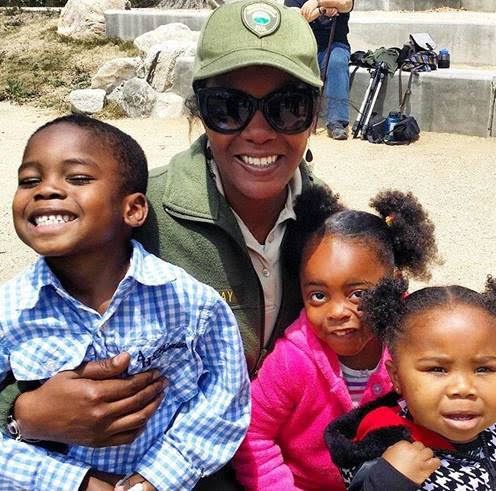| Advancing Integral Heritage Management |
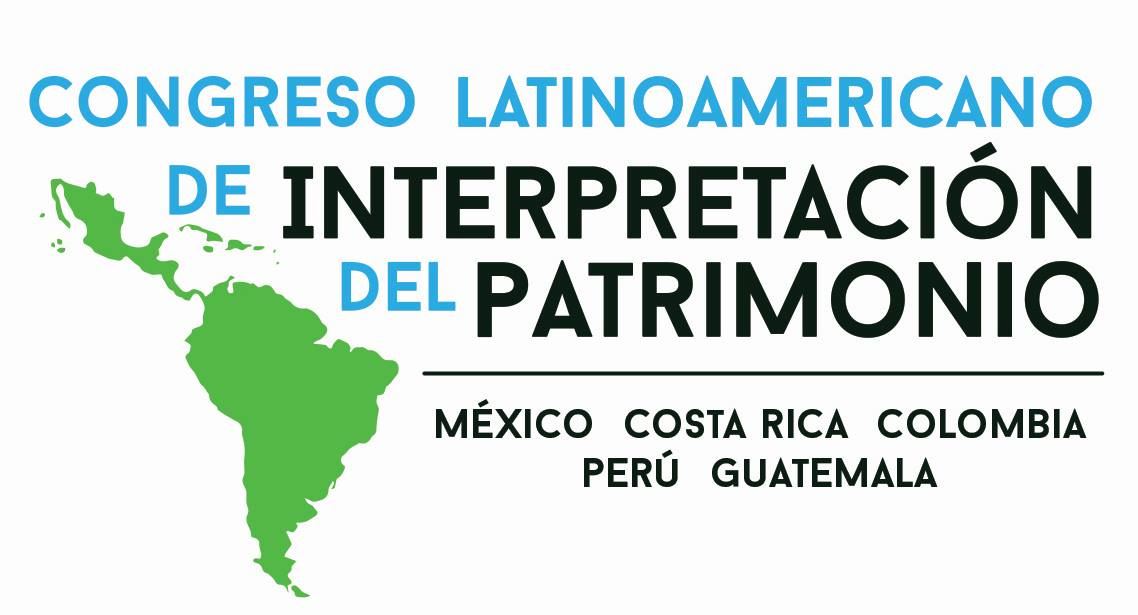
PUP Director Jon Kohl and PUP Board Member Dr. Antonieta Jiménez, Professor at the Colegio de Michoacán in Mexico, co-organized Latin America’s first Congress on heritage interpretation. The Congress took place from 23 to 25 October and involved 38 speakers, 18 posters, and 1,700 registrants from across Latin America and beyond. The Congress format consisted of five countries with physical locations hosting live audiences which transmitted talks across the internet. El Colegio de Michoacán in Morelia, Mexico served as the home base for moderators while speakers spoke into cameras from the Escuela Nacional de Conservación, Restauración y Museografía in Mexico City; University of Costa Rica (Grecia campus) and the Tropical Science Center in San José, Costa Rica; the Universidad del Valle in Guatemala City; the Universidad Científica del Sur in Lima, Perú; and the National Learning Service campus in Bogota (SENA). SENA also had over a dozen training centers across Colombia which presented the transmission before live audiences.
PUP Member Dr. Manuel Gandara of ENCRyM in Mexico City gave the keynote talk on the importance of genius loci, followed by a roundtable with representatives from each country reporting what each country is doing in interpretation. PUP member Marisol Mayorga represented Costa Rica. A PUP colleague from Colombian National Parks, Fernanda del Pino, gave the presentation for Colombia. There was also a roundtable the next day on associations with guest speaker Margo Carlock, the Executive Director of the National Association for Interpretation who visited from the United States. Antonieta and Jon also contributed to that session.
There were a variety of sessions focused on archeology, culture, and nature, while others touched on information about the field itself. PUP-member presentations included: Marisol Mayorga on whether interpretation should be professionalized in Costa Rica, PUP Webinar Coordinator Mariela Garcia on PUP’s webinar program, Colombian PUP Member Flor Lubia and Yaddy Diaz on working with local communities to create interpretive products, and poster sessions (using Google Classroom) from Jon, Marisol, and Antonieta on their books and blogs.
The closing keynote was given by PUP advisor Dr. Sam Ham (pictured below).
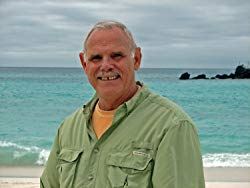
After the Congress concluded, messages poured in from people grateful that the event had happened. So many people had felt isolated and alone in their interest until the Congress brought them together. Right now the organizing committee is preparing certificates of participation, a conference publication, a manual on how to carry out this Congress again in two years time, a new Facebook page for interpretation in Latin America, an improved Congress bulletin, and increased networking.
In 2019, both Mexico and Colombia will develop their budding associations and hold interpretation conferences. PUP remains a strong supporter of interpretation in Latin America and the Congress in particular.
For more information visit the congress website at www.colmich.edu/congresointerpretacion and the Facebook event at https://www.facebook.com/events/1821818771236611/ which reached 15,000 people since it was created.
PUP Director, Treasurer, and Members to Present at NAI Conference
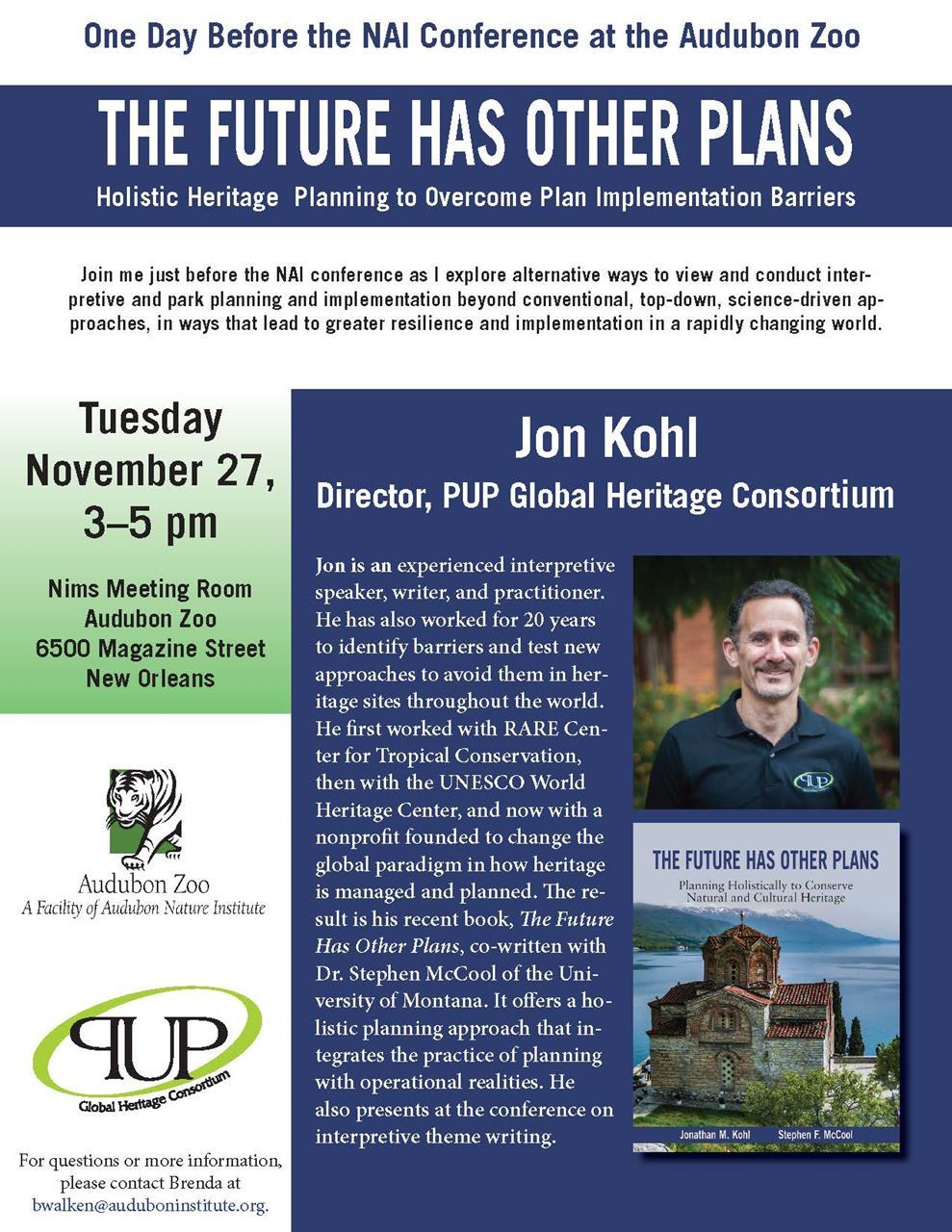
PUP Director Jon Kohl and Treasurer Clark Hancock will be heading to New Orleans at the end of the month for the National Association for Interpretation (NAI) conference. On Friday, November 30, Clark will give the talk "Evolution of a Trailhead" about Austin's Violet Crown Trail. Jon will give a conference talk on Thursday Nov. 29, "How to Craft Strong Interpretive Themes", as well as a pre-conference presentation on Tuesday Nov. 27 at the Audubon Zoo. Jon will also be signing copies of his brand new book, "Interpretive Theme Writer's Field Guide" at the conference.
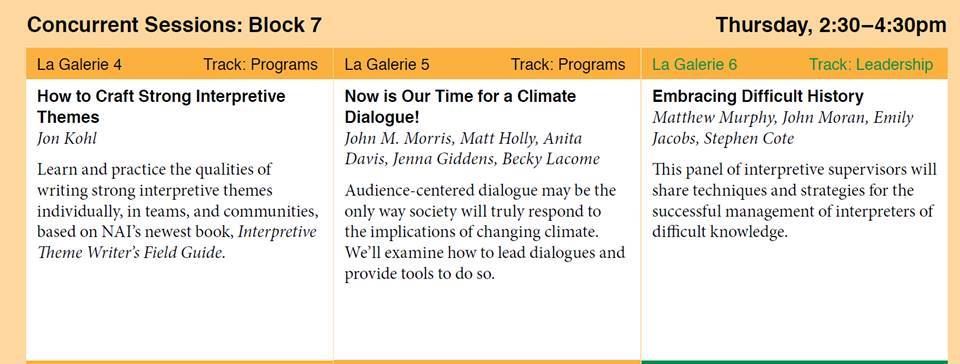
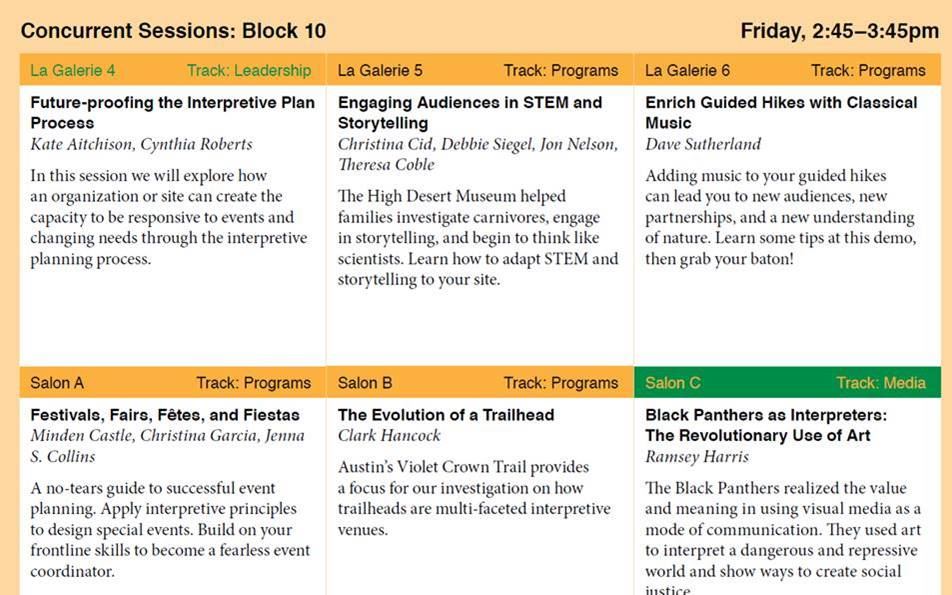
Additionally, PUP Members Amy Lethbridge and Marissa Llanes of the Community Nature Connection will be giving presentations.
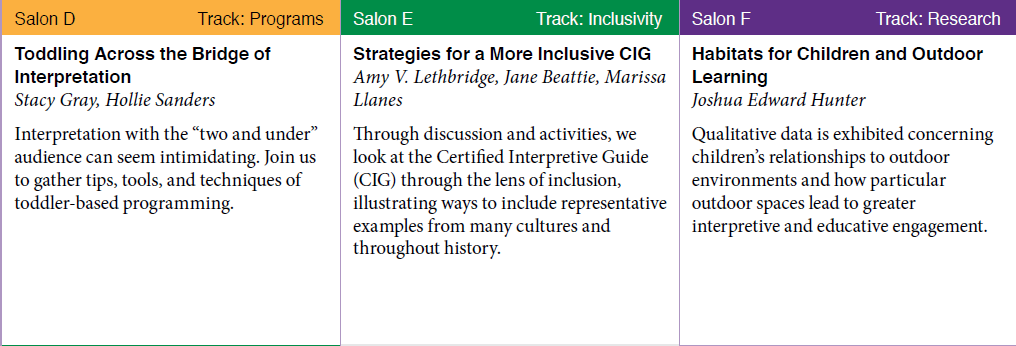
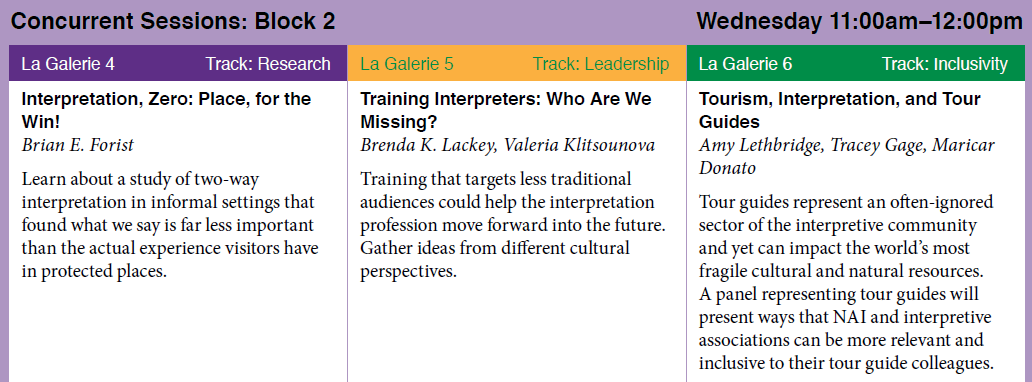
PUP General Member Ted Cable will be winning a Legacy Magazine Award at the NAI Conference for Outstanding Feature Article and we recommend all attend. Congratulations Ted!
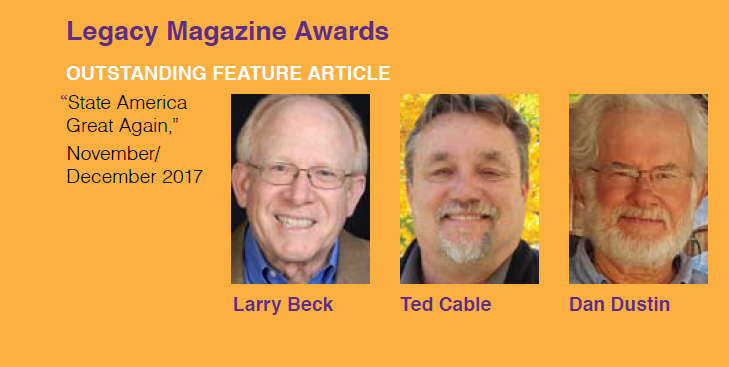
A Conversation with Dr. Karen Vella, PUP's new Vice President

PUP is very lucky to welcome Dr. Karen Vella as our new Vice President. Karen is Associate Professor in the Civil Engineering and Built Environment School at Australia's Queensland University of Technology. She specializes in property and planning and is an active conservationist with a leading role in community engagement at the Great Barrier Reef.
How did you learn about PUP and what have your experiences been with the organization thus far? What is it doing well and, given that it's still growing and developing, how do you think it might maneuver itself to meet its mission?
I was asked to review the book “The Future has Other Plans: Planning Holistically to Conserve Natural and Cultural Heritage” by Jonathan M. Kohl and Stephen F. McCool for a the Parks Journal. During the review I conducted a little research into the authors. It was really after the review was published, when Jon Kohl contacted me and suggested we might like to work together that I started exploring PUP in more detail. My experience with the organisation is very new – I joined in July as the new Vice President so I am still learning the ropes. I think one of its great strengths is its international network and internal governance.
How did you focus your work with the Great Barrier Reef? What are some challenges you've faced with this project?
The GBR is personally important to me – it is my home and my family are farmers in the GBR catchment. It is also one of the seven living natural wonders of the world. I work in the Great Barrier Reef because it is so valued by so many. Unfortunately the Great Barrier Reef will be lost, due to climate change, within my lifetime if action is not taken urgently to address the pressures on the reef and build its resilience. I work on the human dimensions of policy and science in the Great Barrier Reef because this is where we can take action and it is where hope lies.
What encourages you about the state of our world heritage and what keeps you up at night?
I am encouraged by the strengthening network of experts in social science and the human aspects of environmental planning. I think there has been a shift in the thinking around the value of involving people in environmental management, there is still a way to go, but I have noticed things are changing. When I look back over my 20 year career, I see that things have definitely changed for the better. The lack of effective global action in addressing greenhouse gas emissions is what keeps me up at night. I am concerned for the future of our planet and our children
Given the destructive potential of tourism, what do you see as a realistic solution moving into 2019?
In the Great Barrier Reef, tourism offers tremendous potential to educate global citizens on the need for action on climate change. Visiting the Great Barrier Reef is a ‘bucket list’ item for many international visitors. With more frequent coral bleaching, due to warming ocean waters, the Great Barrier Reef is on the climate front line. It will be lost if action is not taken. This is a wonderful opportunity to engage international tourists on the need for action by all countries.
What are some important lessons you try to impart upon your students?
Lots!! I teach Urban and Regional Planners. In about ten minutes I join my class of 65 planners and engineers for Environmental Analysis and Planning. I teach them to expect complexity and uncertainty. I teach them that they are our future and that there is hope. I give them tools to take action through collaboration and show that by building social capital, establishing themselves in networks, by thinking ethically, taking moral action (which can means taking risks), and by reflecting and adapting we can tackle complex environmental problems.
Skillful Interpretation Does Not Require PowerPoint, Objects, or Activities
From the International Heritage Interpretation Blog of Jon Kohl.
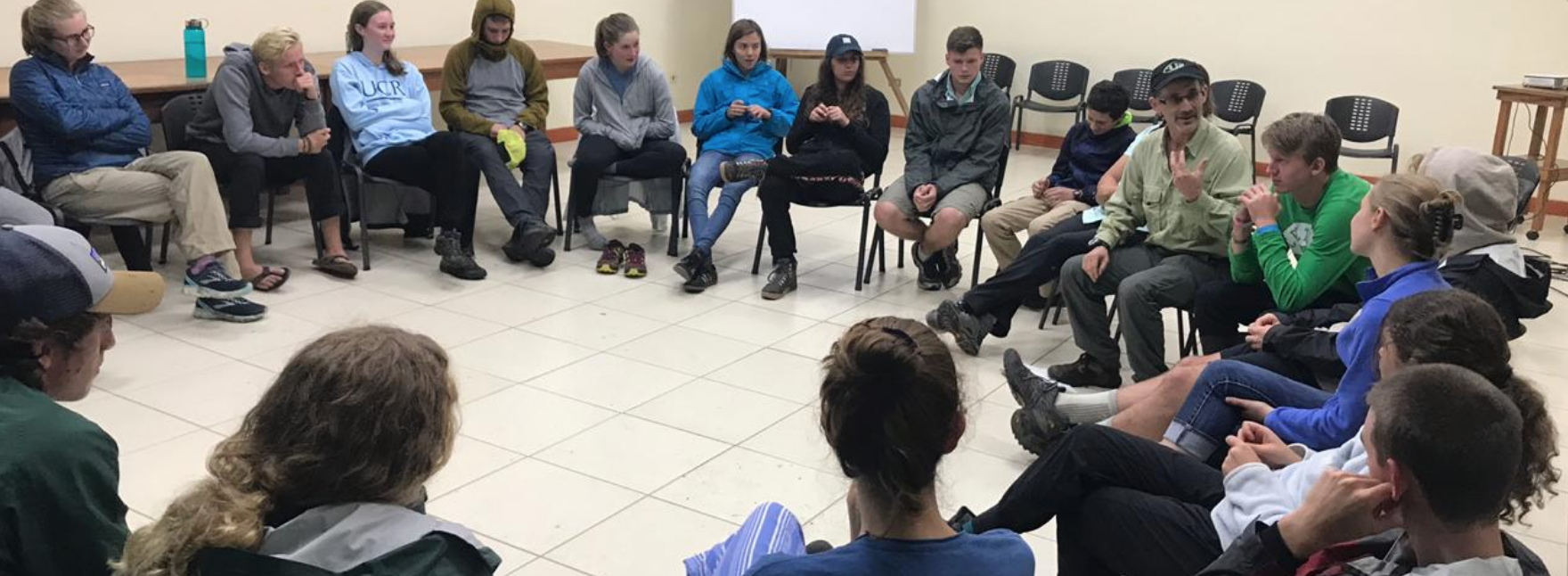
Recipe for Interpretive Failure
It should have been a recipe for interpretive failure: 25 young cellphone-toting college students sitting around a circle for 2 hours; no audio-visual aids, no objects, no activities that caused anyone to stand up during that time, and worst of all no food. What was I thinking trying to lead that group that way?
But when the talk ended, Henry gave me his hand and said it was the best talk of his life; Emma held two thumbs up; Leo had a lot more questions; Sarah wanted additional information to learn more; and most of the group was still talking about philosophy and postmodernism not just after the talk, but the next day as well. That is provocation.
At great risk of sounding boastful, I want to share what happened, why the session had been such an apparent success, and why I argue here and in the past (see my blog on TED talks) that the highest form of audience interaction can occur in the mind, not necessarily physically as is often believed in environmental education and interpretation.
If indeed effective interpretation emerges from the power of a Big Idea and a strong theme as Sam Ham argues and I write about in my book to be published next month about strong interpretive theme writing, then I had both a strong interpretive theme and an important message.
25 Cellphone-toting College Students Swept Up by a Big Idea
Our group of American college students largely from Colorado College are visiting Costa Rica on an off-campus study abroad program with the Associated Colleges of the Midwest. They were traveling to Panama and southern Costa Rica to visit projects related to indigenous health and education. These young folks found themselves in a scenario marked by clashing values between indigenous communities, capitalist industries, and a deep desire to help itinerant coffee-picking workers who traditionally brought their young children with them to the fields, making them work and also missing formal education. How does someone 18-, 19-, or 20-years-old understand that experience?
My talk had an implicit theme: “Cosmological evolution starting with the Big Bang unleashed an accelerating process of development that includes the evolution of different levels or groups of human values and worldviews.” My message was that if we can understand these different levels of consciousness and their associated values they not only help you understand and navigate the various values at work in the indigenous projects but helps you navigate life in general. For teens and young 20s trying to not only understand themselves but their place in a very divided world (the same week that Brett Kavanaugh was being confirmed), such guidance provided high relevance for them.
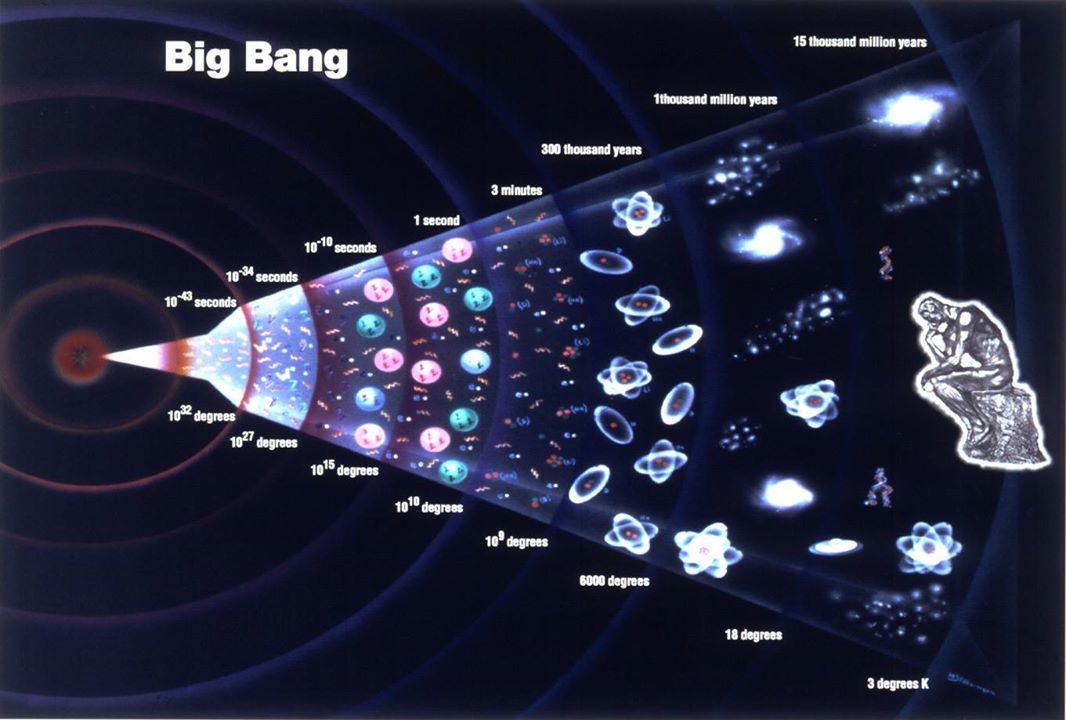
I started with a big hook or POW! by describing the actual process of Universal Evolution with the Big Bang and how for 300,000 years nascent space was so dense that not even light could escape. It was not until one billion earth-years post Big Bang did the expanding universe cool down enough for gravity to begin pulling dust together into the first stars and the first lights in universal darkness. I then described in concrete detail the formation of galaxies, solar systems, and planets, focusing on our own and how geological processes created the conditions for the emergence of life, a major evolutionary jump in the universe. I described how biological evolution proceeded much faster than geological and cosmological and then how 200,000 years ago culture was born, then 40,000 human self-awareness, then 10,000 years ago horticulture, and 4,000 years ago, agrarian societies. Then how human awareness evolved from instinct-based, to tribal groupthink, to egoistic warrior (think Vikings and barbarians), to traditional law and faith-based empires (e.g., ancient Rome, Catholic Church), to rationality and human rights of modernism, then community and inclusiveness of postmodernism, to at least (but not really last) integral thinking consciousness that recognizes the existence and contributions of all previous levels of awareness.
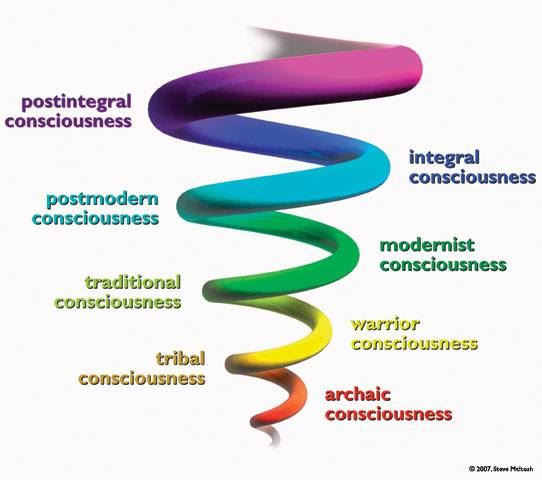
Still sitting and without slides or images of any kind, we conversed how this framework casts light on all human interaction. At first students asked me questions and eventually they asked themselves questions and I was able to sit back, intervening when clarifications became necessary. One of the professors at an hour and a half told me to finish up as we were overtime for dinner. But the audience energy was high and perhaps 75% of the students had actually made contributions to the discussion. Finally, at 2 hours, we decided to wind down the discussion that could have continued onward.
No PowerPoint Slides Necessary
As with many TED talks, powerful interpretation that uses big ideas, concrete language, relevant context, provocative questions, and other rhetorical techniques can blow away the need for audio-visual aids, especially with adults. Although skillful storytellers regularly tell stories to children without visual aids as well. My thesis here then, to be clear, is the better your interpretive and speaking skills, the less need for audio-visuals. This of course is not always true, sometimes a strong image is indeed worth 1,000 words. But way too often we turn to slides (and I’m a passionate photographer) and objects to stimulate interest and thought when we don’t have Big Ideas, don’t understand our audience, lack a provocative structure, storytelling skills, or use vague and general language.
So, give up PowerPoint one time and go completely native without visual aids or technology and focus on good speaking and interpretive skills and you might find that your audience will thank you for it.
Errata from Last Issue:
- Steve's McCool's new book will be published in English, not Portuguese.
- Marisol Mayorga's surname was spelled incorrectly in the last issue.
|
|
 Please visit http://www.pupconsortium.net to learn more about our mission and network
|
| PUPdates |
Recent and Upcoming PUP Events |
|
|
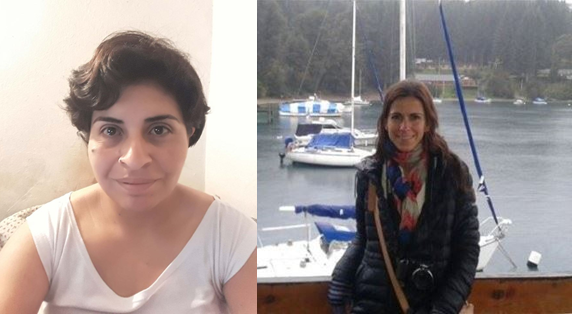
Both recipients attended the webinar on 31 October and 7 November entitled, “How to Write Strong Interpretive Themes according to the Theory of Sam Ham” offered by PUP Director Jon Kohl.
The PUP Global Heritage Consortium signed an agreement in 2017 with the National Association for Interpretation in the United States to offer bimonthly webinars on topics related to interpretation and of relevance for a Spanish-speaking audience. Latin American speakers have given talks ranging from graphic design to visitor centers to interpretation in physically demanding expeditions.
Also in 2017, PUP launched a fundraising campaign to allow a class of architecture and interpretation students from the University of Zulia in Venezuela to participate in the webinar on graphic design. Given the political turmoil in that country, students were unable to pay the inscription fee. Donors provided enough not only for those students and their professor to attend but also resources for additional scholarships.
The scholarship program funds one aspiring interpreter with economic need from Latin America per webinar (with the exception of the initial webinar). The scholarship also comes with a one-year free student membership for PUP or a discounted general membership if the person is not a student. PUP Director Jon Kohl said, “This scholarship has larger importance for our organization as it is the first time that we are able to actively fund activities by Latin Americans in the pursuit of using interpretation for natural and cultural resource management. We will link each recipient with the donor who funded them and hope that other donors will continue to support this important effort." Donors can contribute as little as $15, which is the cost of one scholarship for a one-session webinar, at www.pupconsortium.wildapricot.org/becas.
The Fundación Miguel Lillo in Tucuman, Argentina administers the scholarship program on behalf of the PUP Consortium. The scholarship committee is chaired by PUP member Ana Levy Hynes, the administrator of the foundation´s botanical garden.
For more information and registration in the upcoming webinar on theme writing, please visit www.pupconsortium.net/webinarios.
| Press Release: Jon and Steve Present their Book at ICAHM in Sicily |
 From 25 to 28 October, 2018 Jon and Steve displayed a poster for their book at the ICAHM Annual Meeting in Sicily.
From 25 to 28 October, 2018 Jon and Steve displayed a poster for their book at the ICAHM Annual Meeting in Sicily.
Jon KOHL and Stephen McCOOL, PUP Global Heritage Consortium / University of Montana
Holistic Tourism Heritage Management and Planning: The Future Has Other Plans: Planning Holistically to Conserve Natural and Cultural Heritage (Fulcrum 2016) Crisis has enveloped the more than 200,000 nationally and regionally protected natural and cultural heritage sites around the world. Plans are failing everywhere, and scarce resources are being spent on plans that not only fail to be implemented, but also fail to involve local communities or recognize the important intangible values of protected areas, such as spiritual and recreational uses. Heritage managers face an urgent need to confront this crisis, and each day that they don’t, more of our planet’s heritage disappears. Although heritage tourism management and implementation suffer from a lack of money, time, personnel, information, and political will, The Future Has Other Plans argues that deeper causes to current problems lurk in the discipline itself. Drawing on decades of experience in global heritage management, literature across numerous fields, and case studies from around the world, Jonathan Kohl and Stephen McCool provide an innovative solution for conserving heritage sites. Merging interdisciplinary and evolving management paradigms, they introduce a new kind of holistic planning approach — the first comprehensive application of Ken Wilber’s Integral Theory to planning — that integrates the heritage management practice and conservation with operational realities.
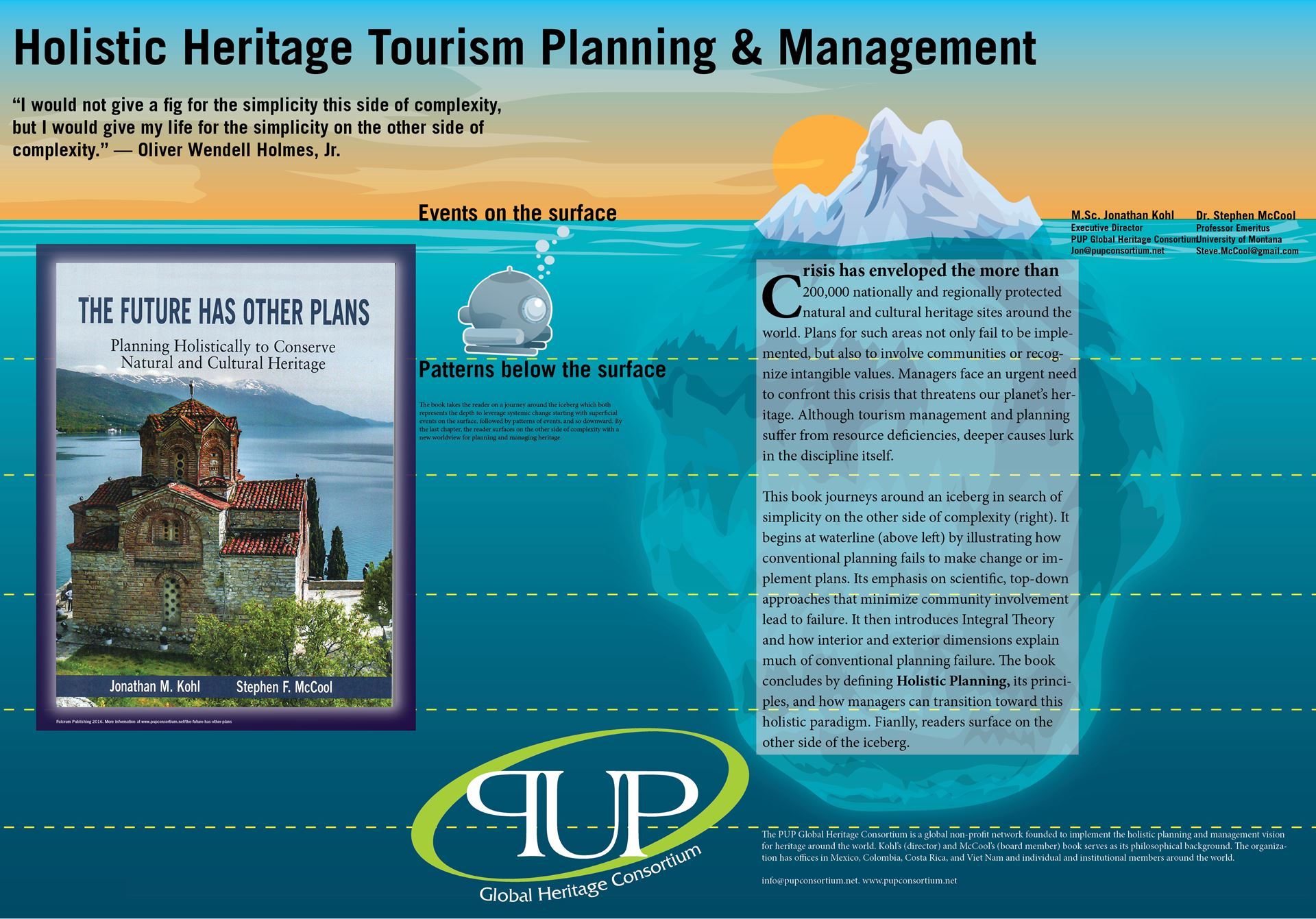
The book journeys around an iceberg in search of simplicity on the other side of complexity. It begins at the waterline by illustrating how conventional planning assumes a Predictable, Linear, Understandable, and Stable (PLUS) world but fails to make change or implement plans. Its emphasis on scientific, top-down, empirical approaches that minimize community involvement lead to failure in a Dynamic, Impossible to Completely Understand, Complex, and Evolving (DICE) World. The book then introduces Integral Theory at the berg’s deepest point and how interior and exterior dimensions explain much of conventional planning failure. The book concludes by defining Holistic Planning, its Principles, and how managers can transition toward this holistic paradigm. In the final chapter, readers surface on the other side of the iceberg.
Publications Corner: A Chapter by PUP Board Member Alison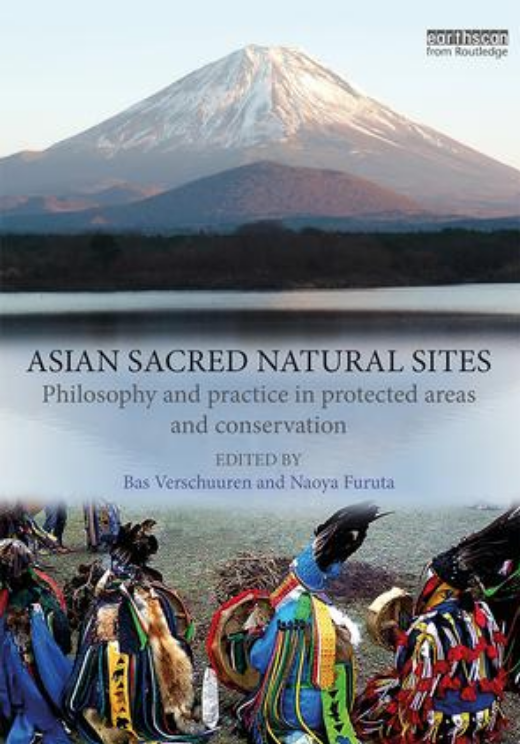 PUP is pleased to showcase Board Member Alison Ormsby's chapter in Asian Sacred Natural Sites (2016). This chapter, titled "Can World Heritage Status Help Protect Sacred Sites in Asia?" was written with Wendy Jackson and Shonil Bhagwat and looks at the impact World Heritage designation has had on three sites in Asia: Sagarmatha in Nepal, Angkor Wat in Cambodia, and the Western Ghats in India.
PUP is pleased to showcase Board Member Alison Ormsby's chapter in Asian Sacred Natural Sites (2016). This chapter, titled "Can World Heritage Status Help Protect Sacred Sites in Asia?" was written with Wendy Jackson and Shonil Bhagwat and looks at the impact World Heritage designation has had on three sites in Asia: Sagarmatha in Nepal, Angkor Wat in Cambodia, and the Western Ghats in India.
Through an examination of each site's history and the impact World Heritage status has had on tourism, resources (natural and cultural) and, "the sacred", Ormsby, Jackson, and Bhagwat come to a well-reasoned and thought-provoking conclusion on the risks and benefits of UNESCO World Heritage status. Tourism, for example, can have exhaustive and harmful effects on a site but can also provide much needed revenue. Therefore, sites must be carefully regulated to ensure the continuity of natural resources and culture. Ultimately, they argue, communities and stakeholder groups need to be encouraged to take a more active role in managing sacred spaces.
Citation: Verschuuren, Bas & Furuta, Naoya. (2016). Asian Sacred Natural Sites: Philosophy and Practice in Protected Areas and Conservation.

